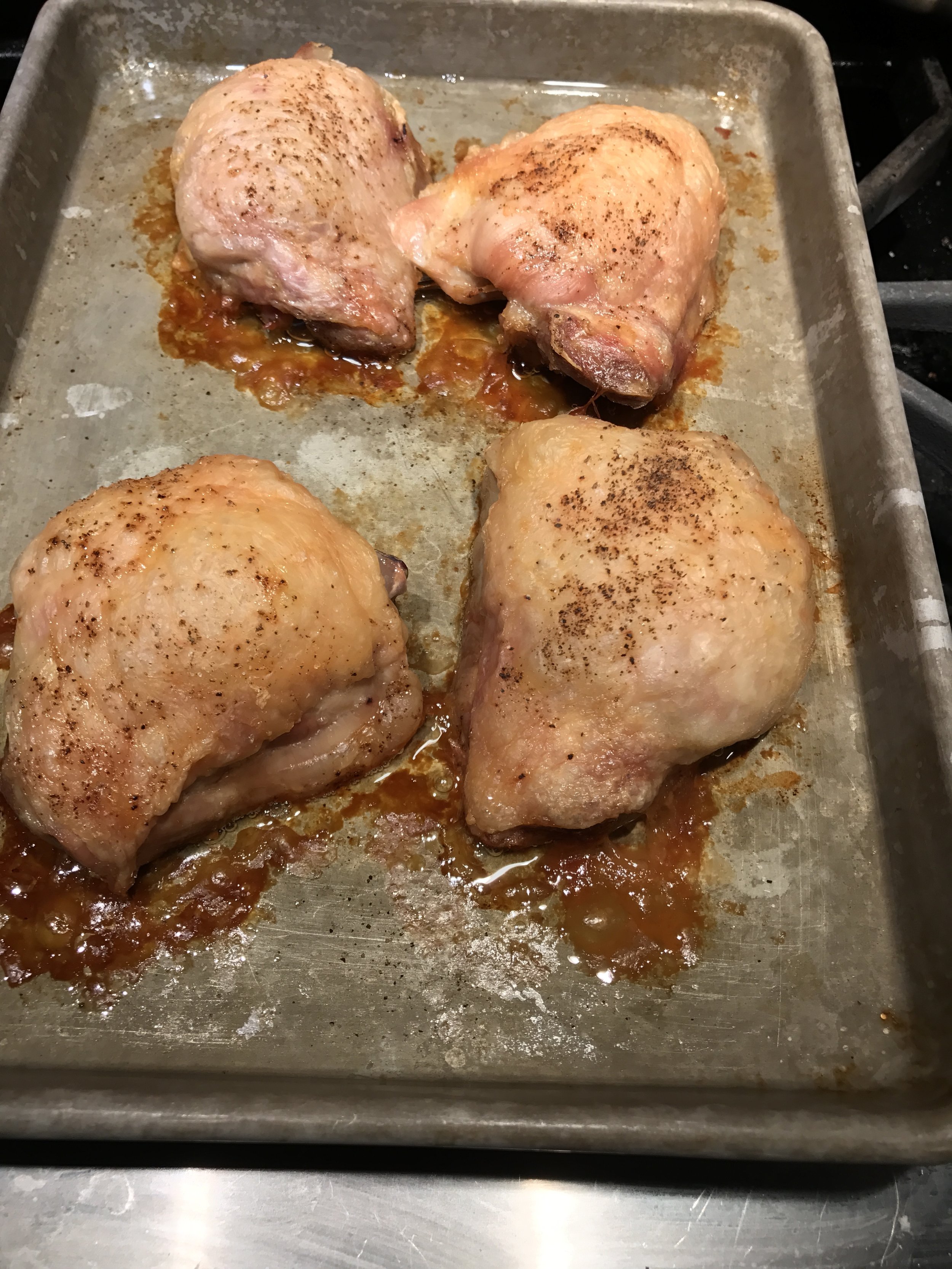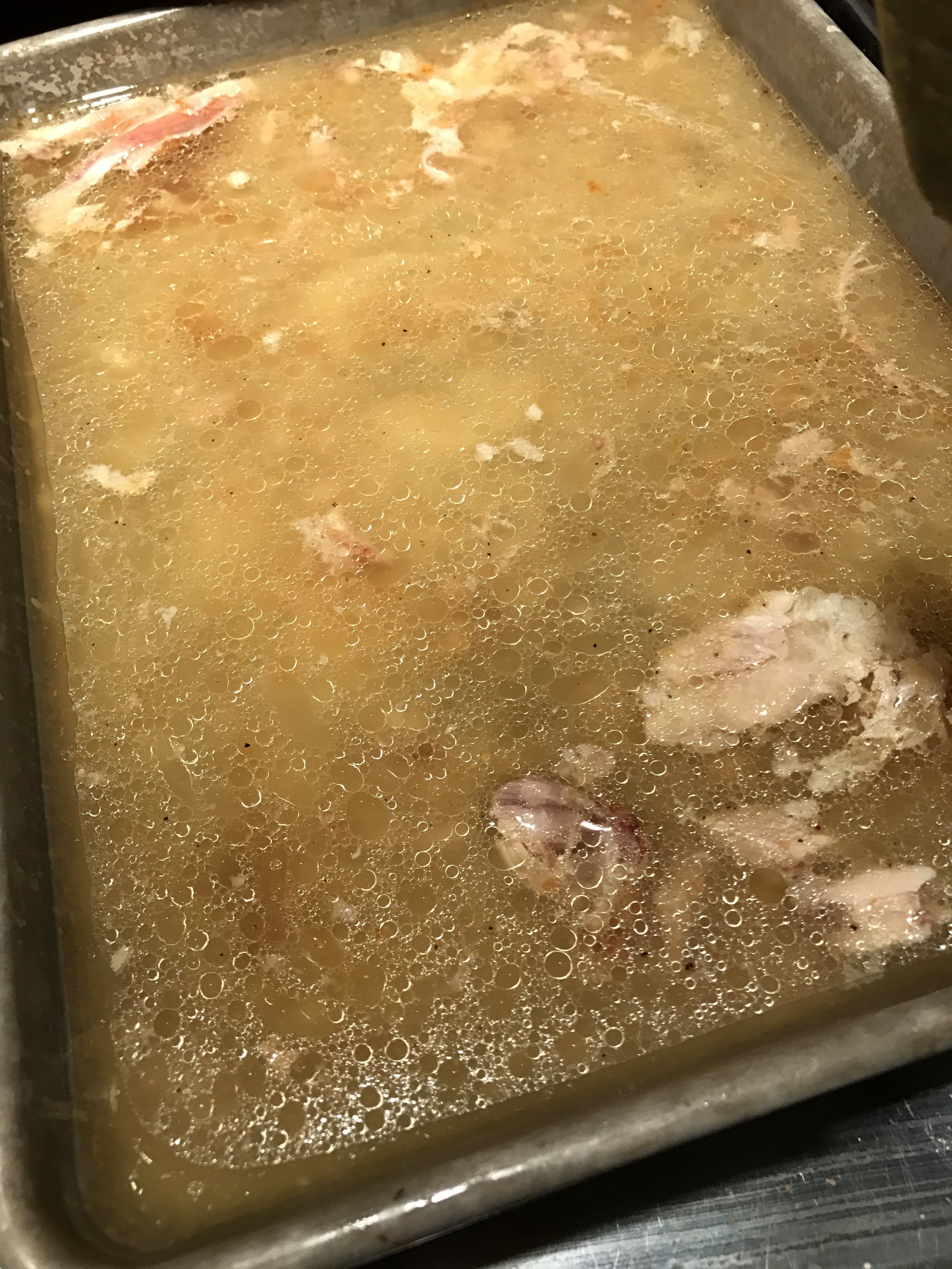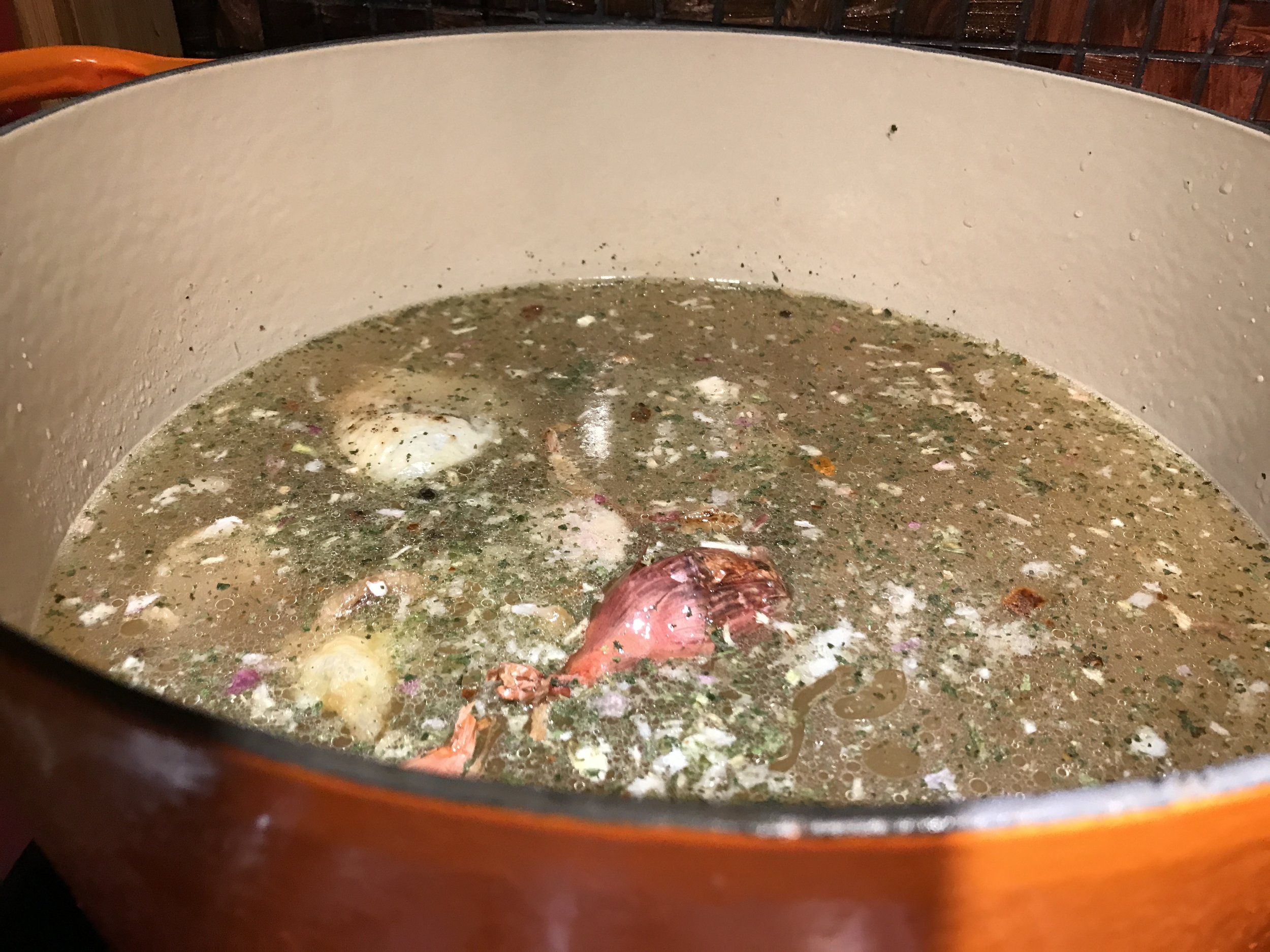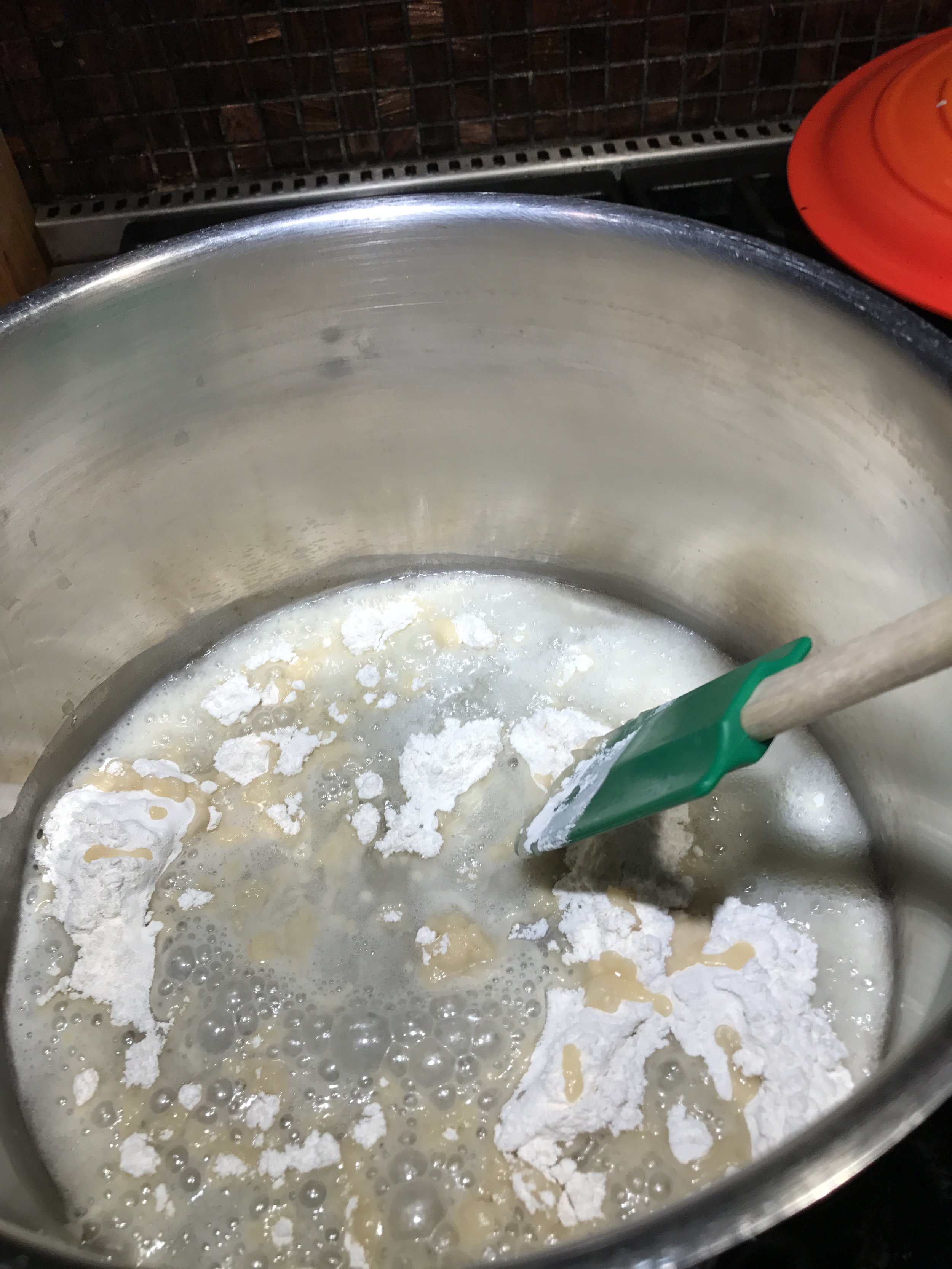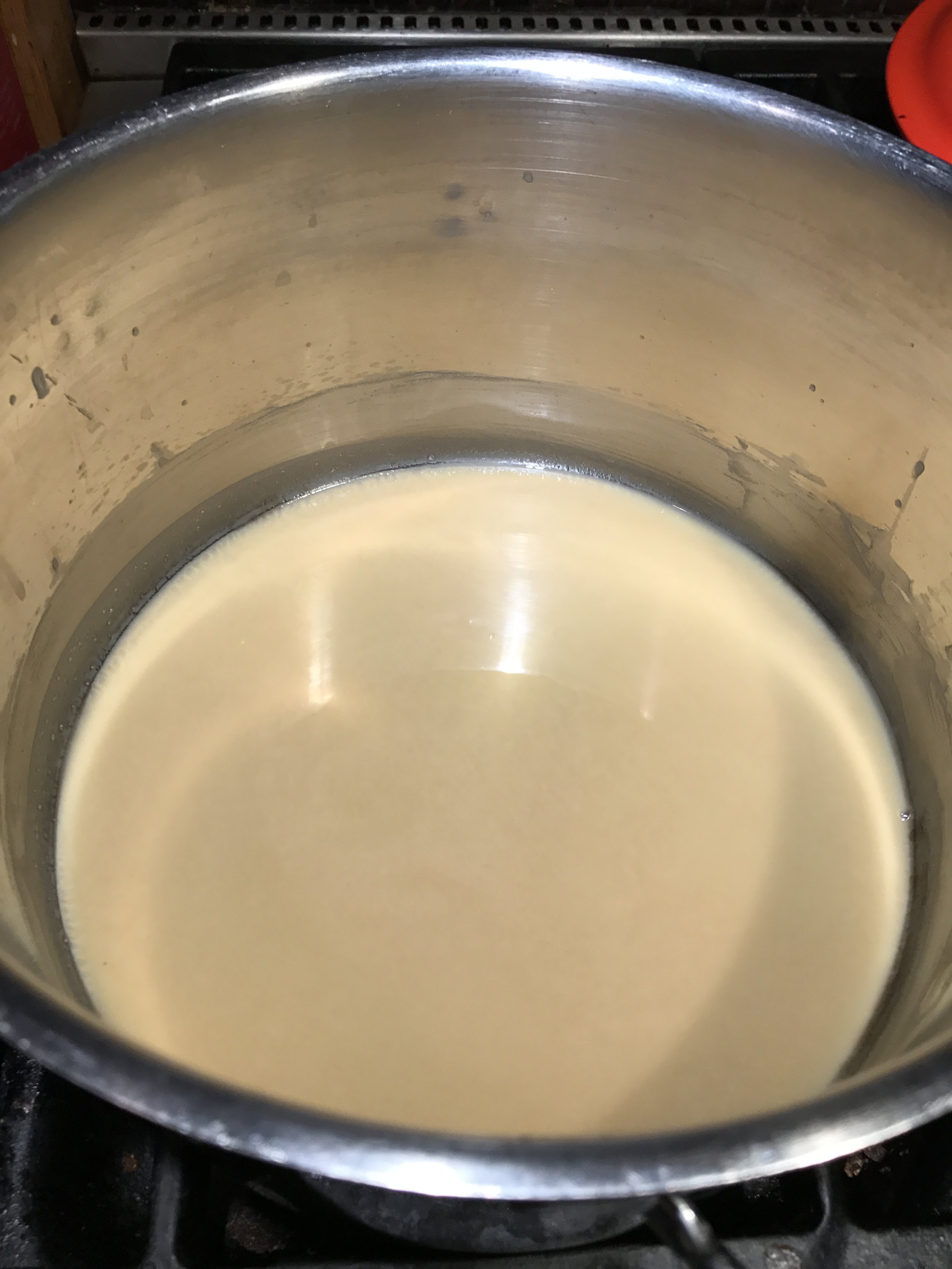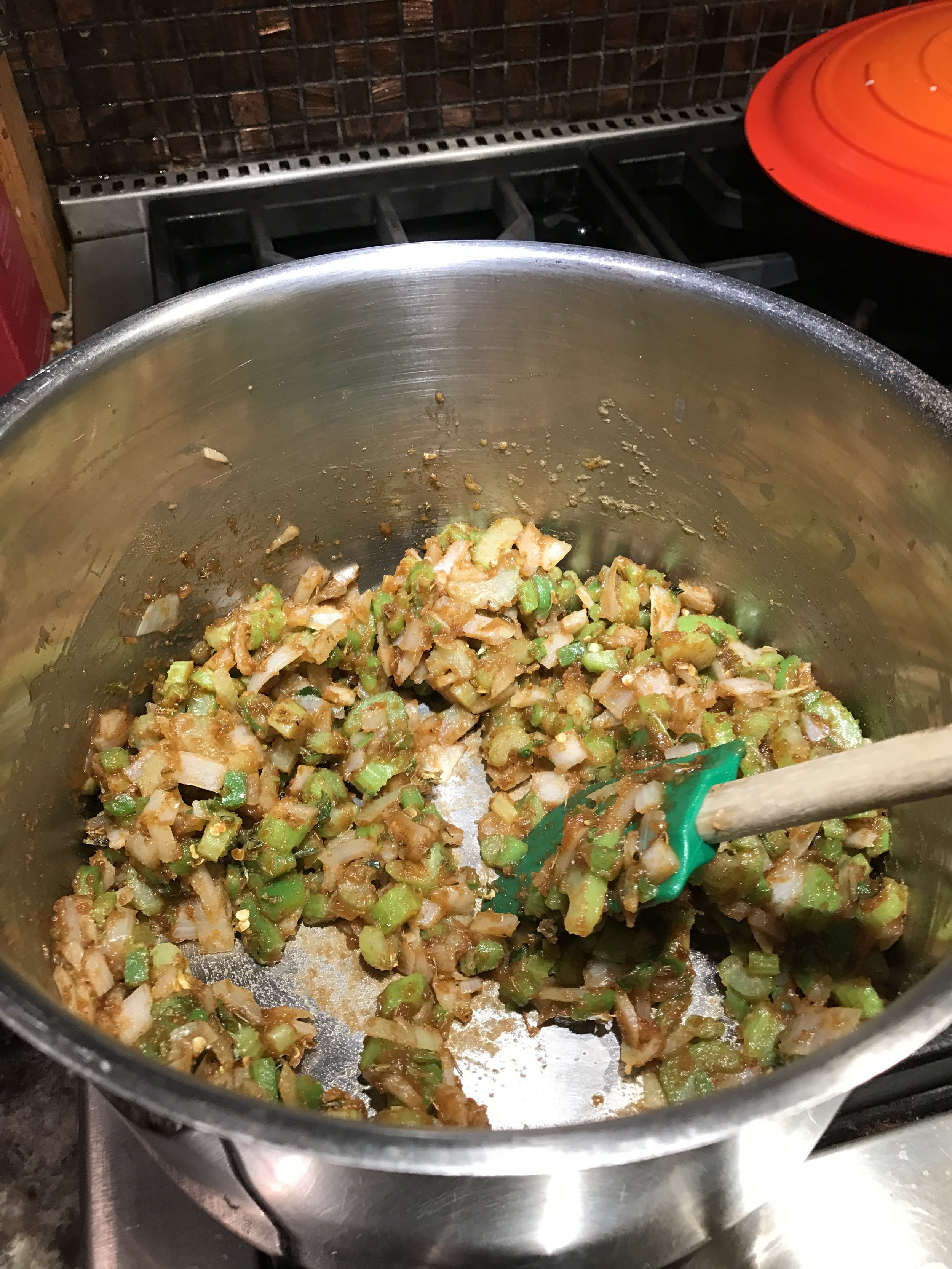Laissez Le Bontemps Rouler! Qorkz Kitchen Addition
/Happy Mardi Gras!
To celebrate this holiday, I always like to make gumbo, and when I say gumbo I mean gumbo for crowd. For some reason I've never learned how to make this in small batches. So bear with me, and host a party! Feed the neighbors! Freeze the stuff! It keeps. It gets better. Trust me.
Here are the ingredients:
- 2 pounds chicken thighs
- 1/2 cup flour
- 1/2 cup canola oil
- one medium onion chopped
- one medium bell pepper chopped
- 3 stalks of celery chopped
- 1 pound Andouille sausage sliced (if you can't find Andouille any smoked sausage will work)
- 2 small bay leaves
- 1 teaspoon thyme
- 1/8 teaspoon cayenne
- Dried jalapeno flakes (if you like it spicy... I do) to taste
- 1 tablespoon Emeril's Essence
- 1 lb okra sliced into rounds
- 1 teaspoon gumbo filé (recommended if you can lay your hands on some).
A note on the filé. This is dried and ground leaves of the sassafras tree it isn't available everywhere but you can usually find it at a good spice shop. I recommend the Spice House. It adds flavor and texture to gumbo but needs to be added after the heat has been turned off or it makes the dish stringy. Sassafras is also the flavoring in root beer, so maybe serve the kidlettes some A&W with their gumbo.
Double Note: While many of my recipes short and sweet, I'm going old school here. Dave Toomey old school (look at his recipe for Cochinita Pibil Tacos. He is hard core, man.) That starts with chicken stock or broth. What's the difference you ask? Slow cooking the chicken in water will yield you broth. To make stock you add vegetables and seasoning. You can use either, or crappy boxed stuff, but don't complain to me about the taste if you use the boxed stuff. Also? No complaints that you don't have to time to make stock. You do. You just didn't realize it. I used to make it overnight in a crockpot back in the days when I was working full time, going to graduate school and raising two baby girls. So, there.
That being said, here's how I make stock. It starts with roasted chicken. I start with the chicken thighs and season them with salt and pepper on both sides. Place them on a sheet pan and roast in a 325 degree oven. This usually takes about half an hour to 45 min. depending on the size of the thighs that you use. When the smell delicious and look golden brown and have reached an internal temperature of 165 (salmonella ruins a party) take them out of the oven until they are cool enough to touch them. Give them some time. Trust me, I've been burned alot. I'm not patient. Learn from me.
Pull the skin from the thighs. Toss them into a pot. Take a bite of the crispy skill if you need to. I don't judge (yes, I do). Pull the cooked chicken from the bones leaving all the gunky parts behind which go immediately into the pot with skin you didn't scarf down. The chicken meat will go into the gumbo so you haven't wasted it. Your pan will have grease, burned bits and other bits. Don't throw that out! It is gold! Scrape that stuff up using boiling hot water and a spatula, then pour it into the pot with the bones. It usually takes me two tries to get it all all into the pot with the bones. If you are making broth cover this bones and bits with water. If you are making stock, add celery, carrot and onion. They can be fresh or dried. I used dried because I think it gives a deeper flavor and easy to keep around. I also like to add a small shallot and whatever onionskin find laying around in my onion drawer (it has other stuff in it....) The onion peel adds a deeper richer color and we eat in part with our eyes. Look it up. Finally add about 10 peppercorns and enough water to the pot to cover the whole mess and bring to a simmer. Don't let it boil. If you boil the bones your stock will be cloudy. It's will be perfectly edible, just not pretty. Let that simmer for a good two hours (overnight). When it's good and rich strain your stock a colander lined with cheese cloth if you have it, or coffee filters. Heck, I use old pillowcases I'm about to throw out for this purpose (clean pillow court cases! Not just pulled off the bed. At some point they just get dingy and nasty looking - this extends their life). You can freeze whatever leftover stock you have so you don't have to do this every time you cook.
Now you have your excellent broth for your gumbo.
Next, we prep all the vegetables. Most French cuisine starts with a base of chopped onions celery and carrots. It is called a mirepoix. Creole and Cajun cuisine is different. They call their veggie base "The Trinity" you substitute a bell pepper for the carrot. Our gumbo will include okra. Buy it. You can even find it sliced and frozen. Don't be a baby. Yes, it can be slimy if you don't cook it correctly. You are going to do it the right way. You'll like it.
Now that you are all prepped? Make a roux. What’s a roux? Basically, a fat and flour cooked together to thicken a sauce. Not to go all Alton Brown, but the fat has to wrap around the starch particles to help create an emulsion. French cuisine uses roux but mostly a light variety. The Cajuns use a darker roux that adds a nuttier flavor. How do you make it? Stir. Stir. Stir. Heat your pot for a few seconds… add the oil and then the flour. Then start stirring. Initially it will seem to seize up like a paste, but eventually will loosen up and start to bubble. Keep stirring until reaches the color of a copper penny.
Add your trinity veggies into the pot and keep stirring. I know this looks like a mess but it is ok. The heat of the roux helps cook the veggies while they are being mixed around. As the veggies soften the liquid from them will enter the roux adding flavor. When they look softened but not burnt, deglaze the pot. You can use wine, beer or stock. I like to use beer and prefer something with some depth, like a stout or porter. Adding the liquid will make the roux do its thickening job. Keep stirring to avoid lumps. When well mixed add a quart of stock and continue to mix to avoid any lumps. Add diced chicken and sliced sausage and spices. In about 10 minutes add a can of diced tomatoes. Simmer for an hour, stirring occasionally. Check your seasoning levels in about an hour. Add the sliced okra and turn down as low as you can. Cook for an additional 15 minutes. Turn off the heat and add the filé. Stir in and serve with rice and any hot sauce you want!
I suggest serving this with Syrah or Zinfandel. You need something that can stand up to it. Enjoy!


